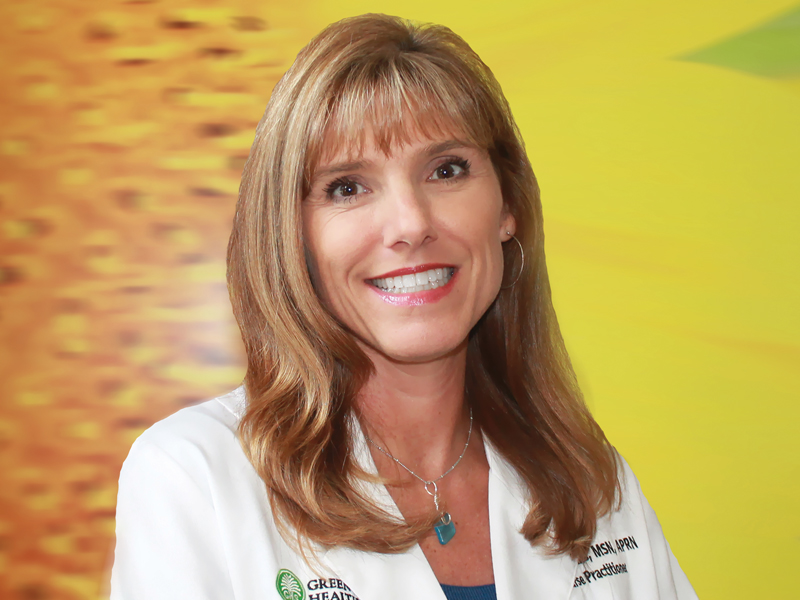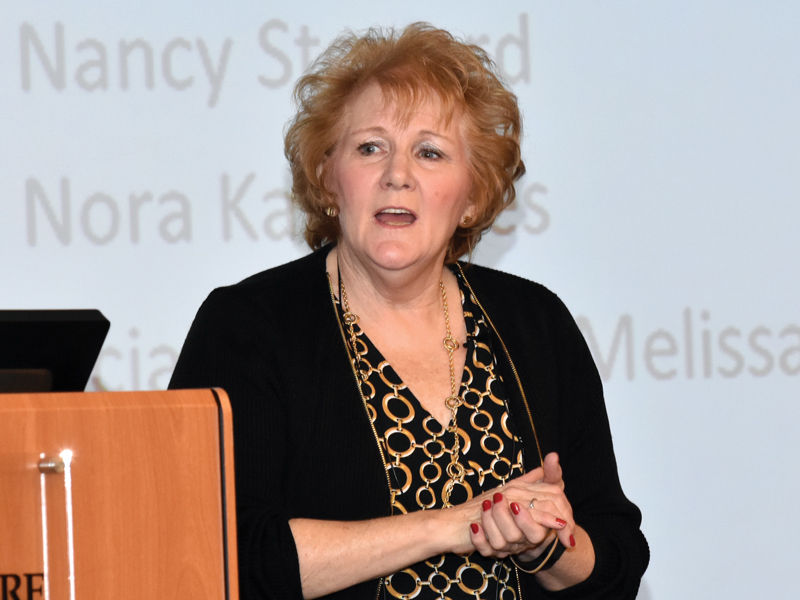Cancer Prevention Through Community-Based Programs
Preventing a cancer diagnosis is the most surefire way to survive it. However, the public and news media communicate more about emerging treatments and newly approved oncology drugs and less about ways people can take steps to prevent cancer before it starts.

Oncology nurses have a role and obligation to spread public health education and an attention to disease prevention, so Americans can change risky habits that may lead to future cancer diagnoses.
One of the biggest challenges facing cancer prevention education is establishing a base of knowledge and understanding with patients. Crossing that educational chasm starts at the grassroots level—within the community—and opens lines of dialogue for patients to learn and ask questions. Oncology nurses are experts in working directly with patients to communicate and disseminate disease information, and many are forming initiatives to spread cancer prevention education through community-based programs.
The Importance of Community-Based Cancer Prevention Programs
According to the National Cancer Institute (https://www.cancer.gov/about-cancer/understanding/statistics), more than 1.6 million Americans were diagnosed with some type of cancer in 2016. Some of the most regularly diagnosed cancers, like lung, cervical, and skin cancers, are also some of the most preventable. ONS member Nora Katurakes, MSN, RN, OCN®, manager of community health outreach and education at the Helen F. Graham Cancer Center and Research Institute at Christiana Care Health System in Newark, DE, understands the need for prevention education.
“To create healthier populations, more emphasis is needed on strategies to lower the risk of cancer,” Katurakes says. “It’s important to provide patients with information about avoiding exposures that increase the chances of cancer, like tobacco use, sun damage, and chemical exposure. We also need to inform them about new information like the human papillomavirus (HPV) vaccine that can prevent cervical and head and neck cancers.”
Cancer diagnoses impact patients as well as families and loved ones, but they also can have a ripple effect in the community. ONS member LeAnn Perkins, MSN, APRN, nurse practitioner at the Greenville Health System Cancer Institute, Center for Integrative Oncology and Survivorship, in South Carolina, knows how communities can be affected by cancer.
“Cancer is expensive to treat and time consuming for the patient. It requires massive resources of the community, including the workforce. As patients get treated, they miss work or have to take a leave of absence from work, which not only disrupts the patient’s life but the workplace as well,” Perkins notes. “Cancer is life altering for patients, but it also affects family members, friends, and coworkers. Any strategies we can implement to decrease the risks of getting cancer—or to detect it early—can decrease mortality and morbidity and help lower the burden on the community.”
Perkins points to the lack of resources for many cancer centers as a sign that community-based prevention programs are needed to address the risks for cancer.
“Most cancer centers do not have a comprehensive model for cancer screening or for education on the risks and causes of cancer and ways to decrease the risk individually,” Perkins says. “Cancer centers treat patients with cancer and focus on screening those patients for future cancers or educating them on decreasing their risks for future cancers. However, they don’t screen or educate the general population. Community-based programs can reach those who live and work directly in our community.”
Developing Community-Based Prevention Programs
Identifying the need for a cancer prevention program in your community means looking at the factors of the populations you serve. What types of cancers are most common? What are the lifestyle choices of community members? Moreover, investigate the demographics of your area and touch base with other experts.
“Knowing your own community is key. Know the current state of what is available before creating something on your own,” Katurakes says. “Understand and link with your state’s cancer control plan. This can be found mostly through state cancer consortiums, public health, and the American Cancer Society. Understand cancer guidelines and screening recommendations, and talk with your cancer committee if you’re linked to a hospital system. Involve other members of the team: primary care, medical oncology, social workers, and nurse practitioners. Be clear how the program aligns with goals for the community, special populations, cancer guidelines, and outcomes.”
Perkins’ prevention program also focuses on being comprehensive and including many members of the interprofessional team.
“We have a team that has been established for a comprehensive cancer prevention program. We identified key providers in breast health, gastrointestinal, genitourinary, gynecology, dermatology, lung, endocrine, and ear, nose, and throat,” Perkins notes. “These specialists are experts in their field and provide the most up-to-date research and screening recommendations, as well as risk-reduction management for each type of cancer. We have started piloting the program and are seeing patients for a risk stratification visit.”
After stratifying a patient’s risk, Perkins and her team will make recommendations and provide education tailored to the specific needs of that patient.
“In our cancer institute, we are creating a one-stop cancer prevention and early detection clinic that includes risk stratification evaluating current medical history, past medical history, family history, genetic testing results, high-risk chronic health issues, lifestyle factors, and all other aspects of the whole person to better make recommendations,” she explains.

Addressing Risks in the Community
The general public can limit risks for cancer in several ways. Although tobacco cessation and appropriate skin protection are two of the most widely known prevention strategies, Katurakes and Perkins agree that numerous other tactics are often missed by the public and healthcare providers alike.
“One of the most overlooked components of cancer prevention is the impact of lifestyle choices,” Katurakes says. “These include diet, exercise, and choosing to vaccinate for HPV. Many patients have a relationship with their primary care provider where they rely on them to ‘tell me what to do.’ It’s extremely important for us to share valuable information and keep it simple for patients to take action.”
Making healthy changes can be difficult for many, but it’s necessary to communicate the benefits of risk-reducing lifestyle decisions. Perkins recognizes the need for that education among patient populations and the larger community.
“The importance of exercise, maintaining a healthy weight, and eating a nutritious diet with plenty of vegetables and fruits, lean meats, low amounts of sugar, and fewer processed foods is often overlooked. Adopting a plant-based diet certainly helps our bodies to function better and remain healthier,” Perkins says. “Other important lifestyle factors include limiting alcohol, decreasing stress, and managing anxiety. Lifestyle factors are extremely important, but they are remarkably difficult to change. They require long-term commitment with small steps in the beginning to be successful.”
Overcoming Barriers to Prevention
Talking about implementing prevention strategies can seem easy, but the reality of the healthcare environment means that these tactics and creating community-based programs face numerous challenges.
“Education for cancer prevention and risk reduction is certainly an issue, and reaching individuals to deliver that information can be challenging with the barriers that exist between the general population and the healthcare system,” Perkins says. “People need to know what the screening recommendations are, and they need to have access to these services—regardless of whether they have insurance. People also need to be educated on what prevention actually means and what they can do to help decrease their risk of cancer.”
Katurakes says that the healthcare system’s overall focus on prevention is something that needs to be supported.
“Resources dedicated to prevention are usually not supported or funded continuously,” Katurakes notes. “Our healthcare models are for the sick and have not been focused on prevention. With the shift toward population health, along with the rising costs of health care, our efforts should be focused in this area.”
Ultimately, prevention, community outreach, access, education, and early detection require a team effort—both from within the medical field and without.
“It takes many stakeholders to lay out a plan that will make an impact. That means including those who are within the populations being left behind in prevention efforts,” Katurakes says. “When addressing prevention efforts, oncology nurses shouldn’t try to do it alone. Work collaboratively alongside the team within the cancer community, including local agencies, sororities, schools, and survivors, and it will make your efforts more successful. Prevention is a team effort.”
